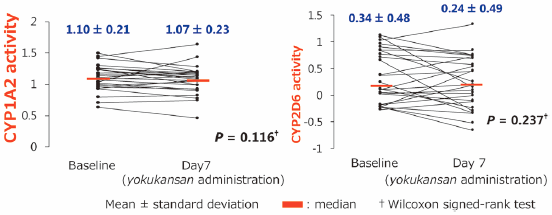- J-STAGE home
- /
- Biological and Pharmaceutical ...
- /
- Volume 39 (2016) Issue 9
- /
- Article overview
-
Hiromi Soraoka
Division of Pharmacology and Therapeutics, Graduate School of Pharmaceutical Sciences, Kumamoto University
-
Kentaro Oniki
Division of Pharmacology and Therapeutics, Graduate School of Pharmaceutical Sciences, Kumamoto University
-
Kazuki Matsuda
Division of Pharmacology and Therapeutics, Graduate School of Pharmaceutical Sciences, Kumamoto University
-
Tatsumasa Ono
Division of Pharmacology and Therapeutics, Graduate School of Pharmaceutical Sciences, Kumamoto University
-
Kosuke Taharazako
Division of Pharmacology and Therapeutics, Graduate School of Pharmaceutical Sciences, Kumamoto University
-
Yoshihiro Uchiyashiki
Division of Pharmacology and Therapeutics, Graduate School of Pharmaceutical Sciences, Kumamoto University
-
Ryoko Kamihashi
Division of Pharmacology and Therapeutics, Graduate School of Pharmaceutical Sciences, Kumamoto University
-
Ayana Kita
Division of Pharmacology and Therapeutics, Graduate School of Pharmaceutical Sciences, Kumamoto University
-
Ayaka Takashima
Division of Pharmacology and Therapeutics, Graduate School of Pharmaceutical Sciences, Kumamoto University
-
Kazuko Nakagawa
Division of Pharmacology and Therapeutics, Graduate School of Pharmaceutical Sciences, Kumamoto University Center for Clinical Pharmaceutical Sciences, Kumamoto University
-
Norio Yasui-Furukori
Department of Neuropsychiatry, Graduate School of Medicine, Hirosaki University
-
Daisuke Kadowaki
Center for Clinical Pharmaceutical Sciences, Kumamoto University Department of Clinical Pharmacology, Faculty of Pharmaceutical Sciences, Kumamoto University
-
Keishi Miyata
Department of Molecular Genetics, Graduate School of Medical Sciences, Kumamoto University
-
Junji Saruwatari
Corresponding author
Division of Pharmacology and Therapeutics, Graduate School of Pharmaceutical Sciences, Kumamoto University Center for Clinical Pharmaceutical Sciences, Kumamoto University
Supplementary material
2016 Volume 39 Issue 9 Pages 1468-1474
- Published: September 01, 2016 Received: March 10, 2016 Released on J-STAGE: September 01, 2016 Accepted: June 29, 2016 Advance online publication: - Revised: -
(compatible with EndNote, Reference Manager, ProCite, RefWorks)
(compatible with BibDesk, LaTeX)


